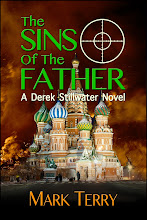Boneshaker by Cherie Priest

November 18, 2009
As promised to the publisher, I'd see what I could do in terms of reviewing/displaying/and generally creating notice of BONESHAKER by Cherie Priest. I finished reading it today.
My review? I liked it. I liked it a lot. Did I love it? No.
Anyway, the novel takes place in 1879 in an alternate time period in a Seattle we wouldn't recognize today. During the Klondike gold rush the Russians offered a reward for any scientists who could develop a drill that could drill through hundreds of feet of ice. Leviticus Blue develops the boneshaker, but before it can be used, he/it goes crazy, drilling all over town, destroying banks and houses, and, worst of all, breaking open a rift in the earth that releases "blight gas," which turns anyone exposed to it into a zombie.
Okay. Cut to 16 years later. Leviticus Blue's widow, Briar, is scraping by in the Outskirts. Seattle has been basically abandoned, a 200-foot wall built around the city to keep the blight gas in. The Civil War has been going on for 10+ years back east. Some people--always the entrepreneurs--have figured out how to use the blight gas to distill into a drug called "lemon drop."
Briar's 16-year-old son, Zeke, decides he wants to go into the city and prove that his father wasn't really the bad guy everybody makes him out to be. So he sneaks into the city. Once Briar finds out, she pursues him. The narration pretty much flips chapter to chapter between the two of them and their often deadly adventures. Rotters (the zombies) are still around the city. A number of people live in the city in underground tunnels. A crazy mad scientist who may or may not be Levi Blue who calls himself Dr. Minnericht runs the city like a demented Wizard of Oz, and dirigibles (airships) occasionally sneak over the walls to collect blight for "lemon drop" and/or to sell whatever else they can. One of the more interesting aspects of the story, for me, was that it was often difficult to tell who the good guys were versus the bad guys, and there are a lot of seemingly unreliable characters in this book--which was great, it really keeps you guessing because it's hard to tell who's telling the truth and who's lying and who's shading the truth for their own benefit and reasons.
I like Cherie Priest's writing style a lot. She's very adventuresome with her word usage and she creates a nice sense of atmosphere. This is a subgenre of SF called "steampunk" and it's the first of its breed I've ever read, which is perhaps why I liked it a lot, but didn't love it. The other reason I didn't love it is because, although I liked her writing style and all the descriptions, it did slow the pace down a fair amount. I mean, this novel's got flying machines, zombies, mad doctors, crazy drugs, weird machines, etc., so to me it seemed quite fresh and new, but I sometimes wished it would move faster. I also suspect my tolerance for "steampunk" is fairly limited. It requires a slightly different type of suspension of disbelief than other forms of SF seem to require, and mix it with this being "historical steampunk" and it's carrying a fairly heavy burden.
But I liked the characters, I liked the weird, creepy setting, and I liked the surprises she had in the end, although not completely unexpected, were good enough to surprise me a little bit. The ending is fairly ambiguous and I suppose it's up to the reader to decide exactly what happens next unless Priest has plans for a sequel. I made up my mind what would happen next and, had I been the author (a very unlikely event, all things considered), I would not have written the epilogue the way she did.
Nonetheless, would I recommend this book?
To readers of SF and steampunk? Absolutely.
To general readers? Yes, give it a try, it's a lot of fun.
Cheers,
Mark Terry



1 Comments:
I almost bought this one because i liked the cover but after reading a few pages decided to spend my moolah on something else.
Post a Comment
<< Home